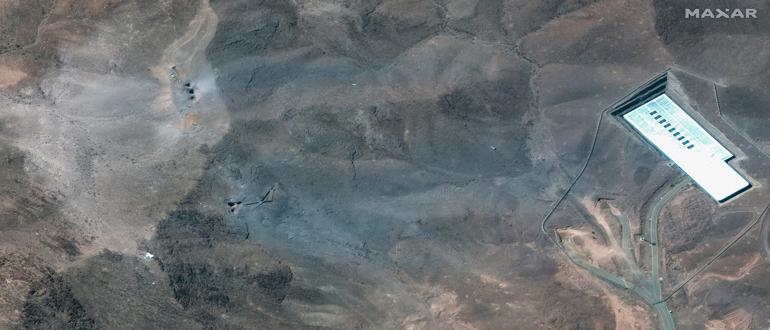
Operation Midnight Hammer, the ultra-secret U.S. precision air attack on Iran’s nuclear sites this weekend, was stunning in its sweep and ambition. It was not only the largest strike using B-2 bombers in history but entailed the longest flight involving the fleet since 2001.
More than 125 aircrafts participated in the mission, including seven B-2 Spirit stealth bombers launched from the continental United States and the first use of the Massive Ordnance Penetrator (MOP) bombs, or “bunker busters,” Pentagon officials said Sunday. The stealth bombers were refueled multiple times in midair during their 18-hour journey to their targets.
Shortly after 2 a.m. Iran time, the B-2 bombers began dropping 14 MOP bombs in strikes on nuclear facilities in Natanz and Fordo. Each MOP bomb is about 20 feet long, weighs 30,000 pounds and is capable of penetrating 200 feet deep inside a target before exploding. (The Fordo site, hidden away in a remote mountainside, includes a uranium enrichment plant that is vital to Iran’s nuclear ambitions.)
The MOP bombs were among “75 precision-guided weapons” used, the Defense Department said.
Two dozen Tomahawk cruise missiles, meanwhile, were launched from a U.S. submarine position in the region at the Isfahan nuclear site in Iran. The missiles were guided by advanced GPS and terrain mapping systems, with a precision margin of less than 10 meters.
Adding to the complexity of the operation, a contingent of B-2 bombers were sent to the Pacific Island of Guam as a decoy while the bombers used to target Iran’s underground nuclear facilities headed east to conduct the mission with little communication to avoid detection.
Gen. Dan Caine, chairman of the Joint Chiefs of Staff, acknowledging during a briefing Sunday that Operation Midnight Hammer was a “complex and high-risk mission” — raising questions about the mission’s effectiveness, as some critics contend. He said no Iranian troops or civilian structures were targeted.
“This is a plan that took months and weeks of positioning and preparation so that we could be ready when the president of the United States called,” Defense Secretary Pete Hegseth said Sunday. “It took a great deal of precision. It involved misdirection and the highest of operational security.”
While Hegseth called the mission a success, an assessment is underway to determine the extent of the damage to the nuclear facilities, Caine said during Sunday morning’s briefing.
“The mission used deception strategies, such as decoy B-2s heading toward Guam, ADM-160 Miniature Air-Launched Decoys (MALDs) to mislead air defenses, and electronic warfare jamming, possibly via EA-18G Growlers, to impair Iranian radar and communications,” HyperFRAME Research analyst Ron Westfall said, assessing some of the technology used in the attack. “Real-time targeting and damage assessment were supported by satellite imagery, likely from Maxar Technologies, and ISR platforms like the U-2 Dragon Lady or MQ-4C Triton.”
How Iran responds is of immediate concern to U.S. and Israeli military operatives.
Iranian state-sponsored threat groups — APT33 (Elfin Team), APT34 (OilRig/Helix Kitten), and APT35 (Charming Kitten/Mint Sandstorm) — are increasingly “logging in, not breaking in,” warns Mike Towers, chief security and trust officer at Veza, said in an email. The groups, he said, use valid credentials to quietly access, move laterally, and persist within enterprise environments. Their tactics include password spraying, spear-phishing, MFA fatigue, and harvesting credentials from both human and non-human accounts.
“Over the past few years, Iran has used cyber as a reliable tool of retaliation, targeting hospitals, utilities, and government systems across the U.S., Europe, and the Middle East. These operations aren’t random. They’re calculated, low-cost moves designed to create disruption, project power and signal intent,” Ariel Parnes, co-founder and chief operating officer at cybersecurity firm Mitiga, said in an email.
“In the wake of Operation Midnight Hammer, cyber retaliation should be expected. It is important to emphasize that in some cases, it may already be in motion: pre-positioned access waiting to be triggered, the so-called ‘red button’ play,” Parnes said. “Organizations should act now: Raise awareness, tighten posture, improve detection, proactively hunt and exercise your response plans.”

